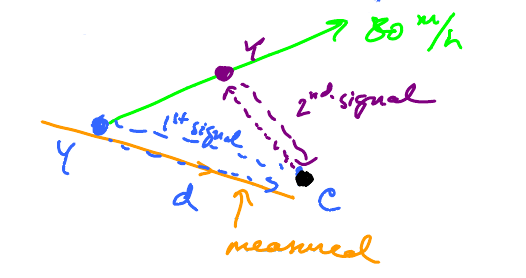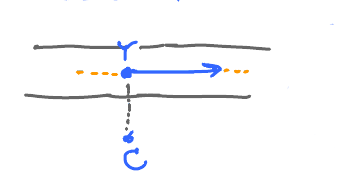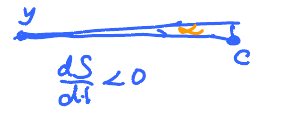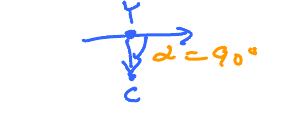This site is being phased out.
Radar gun: the math
Suppose we have a cop with a radar gun. Your speed is 80 mph, what is the gun's reading? Assume the cop's car is stationary.
Signal is sent, then it comes back, the time is measured. Then the second time. $$\begin{aligned} d_{1} &= \underbrace{\text{speed}}_{\text{know}} \cdot \underbrace{\text{time}}_{\text{measure}} \\ d_{2} & = \text{speed} \cdot \text{time} \end{aligned}$$
Reading comes from the following: $$ \frac{d_{2} - d_{1}}{\text{Time between signals}}. $$
Question: Reading = 80 m/h?
To get an idea, consider this extreme example: what if you are just passing the cop's car, like this?
Reading = $0$. So, the reading might be off...
$$ \begin{aligned} D & = \text{distance from cop car to the road. FIXED!} \\ S & = \text{distance between cop car to your car. VARIES!} \\ P &= \text{Distance between your car to the point on the road closest to the cop car. VARIES!} \\ t &= \text{time, the independent variable} \end{aligned}$$
Since 80 m/h is your speed, $\frac{dP}{dt} = 80$. That's what the cop wants to know. But what does the radar measure in reality? $$\frac{dS}{dt}.$$ How do we connect the two, $\frac{dS}{dt}$, $\frac{dP}{dt}$? We use geometry, Pythagorean Theorem: $$ P^{2} + D^{2} = S^{2} \gets \text{Not numbers, variabes, i.e.,functions.} $$ This connects $P$ and $S$, not $\frac{dP}{dt}$ and $\frac{dS}{dt}$ yet. We differentiate Pythagoras Theorem with respect to $t$ to get there: $$\begin{aligned} \frac{d}{dt}\left(P^{2} + D^{2}\right) & = \frac{d}{dt}\left(S^{2}\right) \\ \frac{d}{dt}\left(P^{2}\right) + \frac{d}{dt}\left(D^{2}\right) & = \frac{d}{dt}\left(S^{2}\right) \\ 2P\cdot \frac{dP}{dt} + 2D\underbrace{\frac{dD}{dt}}_{=0} &= 2S\cdot \frac{dS}{dt} \\ P\cdot\frac{dP}{dt} &= S\cdot \frac{dS}{dt} \\ \therefore \frac{dS}{dt} &= \frac{P}{S}\frac{dP}{dt} \end{aligned}$$ We have a relation between these four functions of $t$: $$\frac{dS}{dt} = \frac{P}{S}\frac{dP}{dt}.$$ Let's analyze it and draw conclusions.
This is what the cop sees: $$\frac{dS}{dt} = \frac{P}{s} 80 $$
Simplify, what's $\frac{P}{S}$? $$\cos \alpha = \frac{P}{S} $$ It depends on $t$.
$$ \frac{dS}{dt} = 80 \cos \alpha $$
How does $\alpha$ change as you drive?
- Early: $\alpha$ is small and close to 0, $\cos \alpha$ close to 1, so
\frac{dS}{dt} is close to 80.
Then as $\alpha$ increases, $\cos \alpha$ decreases.
- In the middle: $\alpha = \frac{\pi}{2} (90^{\circ})$, $\cos \alpha = 0$, $\frac{dS}{dt} = 0$.
Then $\alpha$ increases, $\cos \alpha$ decreases as $\cos \alpha < 0$, $$ \frac{dS}{dt} > 0, \left|\frac{dS}{dt}\right| < 80 $$
Late: $\alpha$ approaches $\pi$, $\cos \alpha$ approaches 1.
Generally, $$\left| \frac{dS}{dt} \right| < 80. $$
Conclusion:
- The radar gun always underestimates your speed,
- with the worst estimate when you just passing his car.
What can you do to "improve" the reading? What do you want $\alpha$ to be? As large as possible!
Advice #1: Take the passing lane, if the cop is on your side of the road.
Advice #2: Take the right lane, if the cop in the incoming traffic.








